

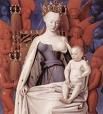




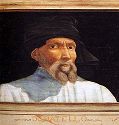





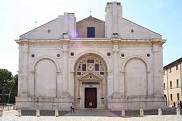
1450 The decade when rich Christian Euros looked like turbaned Muslims? In this decade recovery from the plague years leads to conspicuous luxury and fashion in Europe; the chaperon evolves into a fashion statement, the bigger the bourrelet, the higher your rank?; political parties identify themselves by their colors; by the end of the cent. it is kaput except for ceremonial use, incl. the white cappuccino to go with the brown robes of the Capuchin friars; "Little Red Riding Hood" wears a chaperon rouge; a chaperon is placed over a falcon's head to keep it from seeing something tempting and flying away, causing the word to be used for escorts of ladies; meanwhile tapestries become popular as a protection against the plague, which is thought to be airborne, giving work to artists. On Jan. 28 Henry VI's favorite royal councilor Jack Napes (b. 1396) (real name William de la Pole, 1st Duke of Suffolk), derisively nicknamed "jackanapes" because after rising from the merchant class to become a nouveau riche noble, he adopted a coat of arms featuring a collar and chain, associated with monkeys) is arrested and imprisoned in the Tower of London for the loss of Normandy caused by his 1444 marriage negotiations over Henry VI and Margaret of Anjou, then banished for five years, but on May 2 his ship is intercepted en route to England, and he is beheaded and his body thrown overboard; his enemy Richard Plantagenet, 3rd duke of York is suspected. On Feb. 9 after accompanying him on an expedition against the English in Jumieges, Normandy, Charles VII's 28-y.-o. hot mistress Agnes Sorel (b. 1421) gets a "flux of the stomach" and dies (future king Louis XI is suspected of poisoning her); the enemies of Charles VII's chief of finances Jacques Coeur (1395-1456) (known for pumping up trade between France and the Levant) spread rumors that he poisoned her, getting him arrested next year to get rid of him; in 2005 French scientist Philippe Charlier examines her remains and finds evidence of mercury poisoning, which possibly came from her cosmetics. In Feb. after the Venetian Repub. is blamed for a famine, a revolt in Milan kills the Venetian ambassador; in Mar. Francesco I Sforza (1401-66) and his wife Bianca Maria Visconti (1425-68) are invited in by the senate, ending the Ambrosian Repub. (begun 1447), becoming duke #3 of Milan by popular acclaim, the first duke of Milan whose title is awarded by the citizens, arriving on Mar. 22 (Mar. 25) at the Duomo on horses after refusing the triumphal wagon as a "kings' superstition", founding the Sforza Dynasty in Milan (ends 1500) and becoming good buddies with Cosimo de' Medici of Florence, going on to become the first Euro ruler to develop a foreign policy based on the balance of power concept; the HRE never officially invests him, but other Italian states gradually recognize him, and in 1494 the HRE invests his son; to foster peace, he creates the Triple Alliance with Naples and with Cosimo de' Medici of Florence, and becomes a patron of humanists Francesco Filelfo (1398-1481) et al. as well as learned Greeks, making sure his son Galeazzo Maria Sforza and daughter Ipplita Sforza grow up as well-educated humanists; too bad, Galeazzo turns out to be a bad apple? In the winter after changing the period of the Jubilee from 33 to 50 years, Pope Nicholas V (1397-1455) holds one (ends 1451); 200 pilgrims get trampled at the bridge of Castel Sant'Angelo; the Unwalling of the Holy Door takes place this year; the offerings of the pilgrims fill Rome's coffers, which the learned pope uses mainly to further culture and learning? The Swedish-Danish nat. assembly meets in Halmstad, and Christian I of Denmark and King Karl Knutsson of Sweden agree to restore the Kalmar Union, but only after one of them dies; on Aug. 2 Christian I is crowned king of Norway in Trondheim - didn't I already do this in Copenhagen? The French reconquer Normandy from the English, causing the public to turn on Edmund Beaufort, 2nd Duke of Somerset (1406-55) for his ruinous polices that are causing England to lose its French possessions, causing him to be accused of treason while Henry VI tries to protect him through defeat after defeat; Parliament impeaches his ally the earl of Suffolk, but Henry will not permit him to be tried, and banishes him from England for five years, but the fickle finger of fate intervenes, and his ship is seized by pirates as he tries to cross the Channel, and he is beheaded; in May Jack Cade's Rebellion against weak unpopular Henry VI sees 30K men from Kent and Sussex incl. many respectable small landowners led by Irishman Jack Cade (1420-50) march on London demanding govt. reforms and the restoration of Richard Plantagenet, 3rd Duke of York (1411-60) (lt. of France and Ireland) (Shakespeare claims that Richard, now heading an English army in Ireland hired Cade to lead the revolt so that he could personally intervene, quell the rebellion and triumphantly take the throne by force); the rebels' stated aims are reform of the Beaufort-dominated govt. and a change of ministers; the lords of the council raise an army against them, which mutinies, causing the king to flee from London while the rebels invade the city without opposition on July 3, marching across Deptford Bridge with 46K, hunting down ministers and wreaking vengeance; when they execute a man for being able to read and write ("The first thing we do, let's kill all the lawyers", cries Dick the Butcher in Shakespeare's King Henry VI, Pt. 2, 4.2.74, meaning those who can read and write), then turn into pillagers, the citizens of London expel them, and an army led by the duke of Buckingham cruelly defeats them on July 12 in the Harvest of Heads; Jack Cade is killed; England is now on the verge of civil war, with Duke Richard of York waiting in the wings; he returns to England from Ireland with his army, and forces the king to admit him to his council, with the avowed purpose of reforming the govt. and ousting the hated duke of Somerset, but the king and queen side with the latter, and civil war is on. The Ottomans capture the region around Sarajevo, Bosnia. The Austrians and Hungarians estates demand the release of Ladislaus Posthumous, but HRE Frederick III ignores them. Ming Ying Zong is released by the Mongols, but his younger brother continues as emperor Ming Tai Tsung, and he is given the title of "grand emperor" and put out to pasture; Ming Tai Tsung goes on to repair the Grand Canal and the dykes on the Yellow River, ruling through minister Yu Qian. Sejong dies, and Munjong II (-1452) becomes Yi king of Korea. About this time the Incas subdue the Indians of Chimu in N Peru, and build the "Lost City of the Incas", Machu Picchu (Quechua "Old Peak") (7,875 ft. alt.) in the Urubamba Valley 50 mi. NW of Cuzco, with the cool Temple of the Sun, Room of the Three Windows, and Intihuatana (Quechua "Sun Tier") Temple situated at the NSEW alignnment point of the nearby mountains; after the Spaniards conquer the Incas, the city is overgrown with jungle and lost until 1911; about this time the Incas attempt to invade Chile across the Atacama Desert, but are stopped at the Maule River. The city of Cajamarca (Kashamarka) (Quechua "town of thorns") (alt. 8,900 ft./2750m) (modern-daypop. 226K) is founded in the Mashcon River Valley in the the highlands of N Peru by the Incas, becoming the scene of the Battle of Cajamarca on Nov. 16, 1532, in which a Spanish force of 168 led by cruel conquistador Francisco Pizarro defeats Incan emperor Atahualpa and his 3K-8K retinue, going on to be colonized by the Spanish, becoming Peru's 13th largest city. The Creeks of Alabama and Georgia migrate to North Carolina, forcing the Siouan farmers out for a hundred years. About this time the Hohokam Indians inhabit Agua Caliente, near Tucson, Ariz. About this time the Hausa Empire in C Africa in modern-day NW Nigeria flourishes; the Hausa language becomes the lingua franca of W and C Africa; "Sannu" = hello. About this time the first substantiated evidence of coffee drinking is in the Sufi monasteries of Yemen. At the Council of Debre Mitmaq in Tegulet, Ethiopia, the Egyptians are convinced by emperor Zara Yaqob to accept the religious views of long-gone Ethiopian religious leader Ewostatewos (1273-1352) that the Sabbath should be celebrated on both Saturday (for the Old Testament) and Sunday (for the New Testament); meanwhile Zara Yaqob sends a diplomatic mission to Europe, led by Pietro Rombulo of Sicily, who visits Pope Nicholas V and Alfonso V of Aragon - this is where the ideas that blacks are lazy comes from? Lyons (Lyon), France becomes a great center of silk production. Glasgow, Scotland is made a regality. In this half-cent. early Modern English begins, turning into Modern English by the mid-18th cent. In this half-cent. after the English are driven out of Bordeaux, Irish mercenary ? Hennessey stays and begins producing cognac; the modern-day Hennessy cognac distillery is founde in 1765 by Richard Hennessy. In this half-cent. the term "House of Commons" comes into use in England. By this time the learned in Europe consider the Earth to be a flat disk surrounded by impenetrable oceans, with Jerusalem at the center of all nations and paradise somewhere in the Far East? In this decade doing busts become popular for starving artists as a source of income. Envision your possibilities? About this time codpieces (scrotum pieces) come into style in Europe, flourishing for the next cent., incl. in Shakespeare's time; originally a piece of cloth to cover the newfangled slits placed in men's pants for easy urination? - didn't he die from too much portly cod? In this half-cent. German replaces Latin as the language of official documents in the chanceries of Saxony and Thuringia (only a cent. behind Bavaria?), incl. Meissen and the univs. of Leipzig and Wittenberg. Mocha (Makha) in SW Arabia becomes the main port for coffee export. Architecture: Italy's first true choosing-you-is-a-no-brainer Renaissance universal man Leon Battista Alberti (1404-72) decides to go into architecture, and is commissioned by getting him appointed as architectural advisor to Pope Nicholas V, going on to work on several projects at the Vatican; in 1450 he is commissioned by Sigismondo Pandolfo Malatestiano (1417-68) AKA the Wolf of Rimini to turn the Gothic Church of San Francesco in Rimini into the crypto-pagan Tempio Malatestiano memorial chapel as a tribute to his 3rd wife Isotta degli Atti, becoming the first church to use the Roman triumphal arch (finished 1461). Inventions: The handle-operated Barrel (Street) Organ is invented in the Netherlands. The Merkin pubic wig is invented, named from malkin, a low-class ho, taken from Marykin, a pet form of Mary. Pumpernickel Bread is first baked in Osnabrueck, Westphalia, Germany. Nonfiction: Abramelin (Abra-Melin) (Abraham of Worms) (1362-1458), The Book of Abramelin; written in this decade; a grimoire (magician's handbook). Early in this decade (sometime between this year and 1455 - traditional date Feb. 23, 1455) Johannes Gutenberg (1398-1468) begins printing the 1,282-page 2-vol. 42-line Latin Mazarin (Mainz) Bible in Mainz (financed by goldsmith Johannes Fust), becoming the first major book printed from movable type in Europe; 180 copies are printed; another one with 36 lines per page is later printed; by modern times only 48 42-line Bibles exist, of which 12 are in Germany and 11 in the U.S.; it uses Black Letter (Gothic) Type, which spreads throughout Europe until the more graceful Roman Type (Caroline Miniscule) supplants it except in Bibles, prayer books, and proclamations. Art: Fra Angelico (1387-1455), The Annunciation. Paolo Uccello (1397-1475), Portrait of a Lady. Rogier van der Weyden (1399-64), Christ's Deposition in the Tomb; The Last Judgment; Philip the Good, Duke of Burgundy; an unusually large bourrelet hanging over his shoulder shows him to be one hip fashionista? Births: Croatian humanist poet Marko Marulic (d. 1524) on Aug. 18 in Split. Italian painter Ercole de'Roberti (Ferrarese) (da Ferrara) (d. 1496). Italian explorer John Cabot (Giovanni Caboto) (d. 1498); grows up in Venice; discoverer of the coast of North Am. (1497) while in England's service. Portuguese navigator-explorer Bartholomeu (Bartolomeo) (Bartholomew) Dias (Diaz) (d. 1500); first white European to round the Cape of Good Hope (1486). Portuguese explorer Gaspar Corte Real (d. 1501); brother of Miguel Corte Real (1451-1511). Dutch composer Jacob (Jakob) Obrecht (d. 1505). French Roman Catholic priest-chronicler Johann (Johannes) Burchard (Burchart) (Burkhart) (d 1506) in Niederhaslach (modern-day Bas-Rhin), Alsace. Portuguese viceroy #1 of Portuguese India adm. Dom Francisco de Almeida (d. 1510) in Lisbon. Portuguese navigator-cartographer Juan de la Cosa (the Biscayan) (d. 1510) in Santona, Cantabria. Dutch "Temptation of St. Anthony" painter Hieronymus Bosch (Jheonimus Anthonissen van Aken) (d. 1516) in 'sHertogenbosch (Bois-le-Duc), Brabant; known for triptychs full of fantasy people, animals, demons etc. German-Dutch composer Heinrich Isaac (Isaak) (d. 1517) in Flanders. Spanish courtier-ambassador (to the dukes of Burgundy) Don Diego de Guevara (d. 1520) in Escalante (near Santander); son of Ladron de Guevara; younger brother of Ladron de Guevara; cousin of Antonio de Guevara (1481-1545). French-Flemish #1 composer (the Beethoven of his day) Josquin des Pres (Prez) (Josquinus Pratensis) (Josken van de Velde) (d. 1521) in Conde-sur-L'Escaut, Hainaut; first master of the High Renaissance polyphonic music style. Austrian composer-lutenist Hans Judenkunig (Judenkünig) (d. 1526). German grandmaster of the Livonian Order (1494-1535) Wolter (Walter) von Plettenberg (d. 1535) in Welver, Westphalia. Indian Bishnoi (29ers) sect founder Guru "Jambhoji" Jambheshwar (d. ?) in Marwar, India. Deaths: Spanish poet Juan Rodriguez de la Camara (b. 1390) in San Antonio de Herbon Franciscan Monastery near Padron. Italian painter Pisanello (b. 1395) in Naples. English royal councilor Jack Napes (William de la Pole, 1st duke of Suffolk) (b. 1396) on May 2 in the English Channel (murdered); becomes the subject of the folk ballad Six Dukes Went a-Fishing. French royal bimbo (mistress of Charles VII) Agnes Sorel (b. 1423) (poisoned).



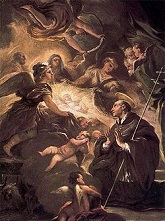
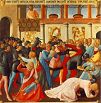
1451 On Feb. 3 sultan (since 1421, except 1444-6) Murad II (b. 1404) dies, and on Feb. 18 19-y.-o. Mehmed (Mohammed) II (the Conqueror) (1432-81) reascends the throne as Ottoman sultan #7 (until 1481), swearing on the Quran to the Byzantine embassy that he will respect their territorial integrity; having a lot to prove, he vigorously expands the family domain in Europe and Anatolia, earning the title of Conqueror (Fatih); remembering how the nobles kept him down, he works to centralize the state and make himself absolute ruler, confiscating property of leading Turkish families, promoting his devshirme (slave) elite, establishing the office of grand vizier, and becoming the first Ottoman ruler to codify state legislation in two major codes (kanunnames); too bad, sin is in, and he spends too much, debases the currency, increases taxes and causes economic discontent? On Feb. 14 28-y.-o. French dauphin Louis (future Louis XI) marries 8-y.-o. politically strategic Charlotte of Savoy (1443-83), daughter of Duke Louis of Savoy and Anne of Cyprus, whom he abandons the moment he makes king in 1461. On May 30 king (since 1446) Binnya Waru (b. 1418) is assassinated by his 1st cousin Binnya Kyan (1420-53), who becomes Burmese Hanthawaddy king #13 (until June 1453). In Oct. Bogdan II, ruler of Moldavia since 1449 is assassinated at a wedding by his brother (bastard son of Alexander the Good) Petru III Aron (-1467); Bogdan II's son Stephen II barely escapes, and flees to Transylvania, placing himself at the mercy of Janos Hunyadi; a civil war begins for control of Moldavia between Petru Aron and Alexandrel, nephew of Alexander the Good (ends Apr. 1457). James II of Scotland takes advantage of the absence of William, 8th earl of Douglas in Rome for the papal jubilee, during which time James' aunt Margaret, widow of Archibald, 5th earl of Douglas dies, allowing him to seize the disputed earldom of Wigtown, which James I had granted to her for life, leaving the dispute hanging; when the earl returns, he pulls off a crypto power play and ceremonially surrenders it to the king in parliament, who regrants it to him reluctantly in Oct. - your ass is grass now? Bordeaux and Bayonne, the last English strongholds in Gascony are captured by the French, leaving only Calais in English hands as their last possession in France; too bad, the citizens of Bordeaux consider themselves English and send messengers begging Henry VI to recapture the province - discount rates at the Hotel de Guise? A proposal is made in the English Parliament to make popular Richard Plantagenet, duke of York heir to the crown, but it is rejected and the proposer imprisoned - back to the drawing boards? The Scandinavian sound in the Baltic is opened to the English. Afghan Pashtun warlord Bahlul Khan Lodi (-1489) topples the say-ya-did Sayyids in Delhi, and founds the Lodi Dynasty (ends 1526). The U. of Glasgow in Scotland is founded under a papal bull of Pope Nicholas V. After Pope Nicholas V unites the diocese of Castello with the patriarchate of Grade, and moves the patriarchate to Venice, bishop of Castello (since 1433) (St.) Lawrence Giustiani (1381-1456) becomes the first patriarch of Venice (until Jan. 8, 1456), helping the panicked citizens deal with the 1453 Fall of Constantinople. Margaret O'Conor Faly (nee O'Carroll), who takes bards under her special care holds a feast in Killeigh, Leix, at which 2.7K poets, musicians, and antiquarians are royally entertained. Architecture: The Vatican Library in Rome is founded by bibliophile Pope Nicholas V for the "common convenience of the learned". Art: Fra Angelico (1387-1455), The Massacre of the Innocents (1451-3). Novels: Giovanni Francesco Poggio Bracciolini (1380-1459), Liber Facetiarum (Book of Humor); 273 bawdy tales satirizing monks and clergy; big hit throughout Europe; incl. the Dead Fly Joke. Births: Chinese #1 eunuch minister Liu Jin (d. 1510) on Feb. 28 in Xingping, Shaanxi Province. Spanish queen of Castile and Leon (1474-1504) Isabella I (the Catholic) of Castile and Leon (d. 1504) on Apr. 22 in Madrigal de las Altas Torres; daughter of John II (1405-54); half-sister of Henry VI of Castile (1425-74); wife (1469-1504) of Ferdinand II of Aragon (1452-1516); mother of Catherine of Aragon (1485-1536) and Joanna the Mad (1479-1555). French duke of Lorraine (1473-1508) and count of Guise (1504-8) Rene II d'Anjou (d. 1508) on May 2 in Angers; son of Count Frederick of Vaudemont and Yolande of Lorraine; nephew of John of Vaudemont; maternal grandson of Rene I of Anjou. Italian/Spanish/? explorer(discoverer of America for the Europeans) (converted or secret Jew?) ("Admiral of the Ocean Sea") ("Iberia's Pilot") Christopher Columbus (Cristobal Colon) (Christophorus Columbus) (Lat. "Christ-bearing dove of peace") (d. 1506) on Aug. 25-Oct. 31 in Genoa (Calvi, Corsica?); son of Domingo Pontevedra (a weaver) and Susanna Fontanarossa (Fonerosa); father of Diego Colon (1474-1526) and Ferdinand Columbus (1488-1539); moves to Portugal in 1476; a blonde from a Jewish family (Cohen?) that converted or pretended to convert to Christianity?; really on a Mission: Impossible to discover a new safe base for Jews after they are expelled from Spain by Isabella and Ferdinand, playing the cool trick of having anti-Semitic Roman Catholic rulers finance it? Uzbek ruler (khan) (1500-10) Muhammad Shaybani ("Shibagh" = wormwood/obsidien) Khan (Abu'l-Fath Muhammad) (d. 1510); descendant of Genghis Khan. Portuguese explorer Miguel Corte Real (d. 1511) (1448-1502?); brother of Gaspar Corte Real (1450-1501). Ottoman adm. Kemal Reis (Ahmed Kemaleddin) (d. 1511) in Gallipoli; paternal uncle of Piri Reis (-1555). Deaths: English clergyman William Byngham (b. 1390) on Nov. 17. Ottoman sultan #6 (1421-44, 1446-51) Murad II (b. 1404) on Feb. 3 in Edirne. Burmese king (1446-51) Binnya Waru (b. 1418) on May 30 in Pegu (assassinated).







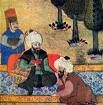


1452 In Feb. after finding out that his rival William Douglas, 8th Earl of Douglas (b. 1425), head of the most powerful aristocratic family in Scotland had formed an alliance with "Tiger Earl" Alexander Lindsay, 4th Earl of Crawford (-1453) and John Macdonald (John of Islay), Earl of Ross (1434-1503) (4th and last lord of the Isles), and had used the title "earl of Wigtown" on a charter, pissed-off "Fiery Face" James II of Scotland summons Douglas to Stirling with a promise of safe conduct, then on Feb. 22 on the 2nd day of discussions stabs him in the neck twice at dinner, and has his attendants finish him off and throw him out a window with 26 stab wounds; open warfare with the feudal family of the Douglases in SW Scotland begins, headed by his pissed-off brother and successor James Douglas, 9th Earl of Douglas (1426-88), who arrives at Stirling with 600 men and burns it after finding the king gone for only a couple of days; preggers Queen Mary is sent to the palace of St. Andrews bishop (since 1441) James Kennedy (1408-65), where she gives birth to future king James III ("son of Fiery Face") in May; in Aug. after the king ravages the lands of Douglas and James Hamilton, 1st Lord Hamilton, an accord is reached at Douglas Castle that is set to last until 1455. On Mar. 19 37-y.-o. German Hapsburg King Frederick III, archduke of Austria, duke of Styria, Carinthia and Carniola, and king of Rome is finally crowned HRE Frederick (Friedrich) III (1415-93) by Pope Nicholas V three days after marrying 18-y.-o. infanta Eleanor (Leonor) of Portugal (1434-67) (whose large dowry pays off his debts and cements his grate wealth and powah), becoming the last HRE crowned in Rome by the pope; his motto is the anagram AEIOU ("Austria Est Imperare Orbi Universo") (Austria is the Ruler of the World) (It is Austria's Destiny to Rule the World), which he has inscribed on all his possessions (and his 22-inch biceps?); too bad, 40 years later Columbus discovers the New World, and the Austrians don't get any, causing W Europe to pass them by, their big biceps shrinking to toothpicks like a shrunken balloon, and by the 20th cent. they are down to a cute little tourist trap with the Von Trapp Singers and Do-Re-Mi-Fa-So-La-Ti-Do? No wonder their #1 guy of the 20th cent. Ahnuld emigrates to the U.S. to become a Hollywood star and marry into the Kennedy clan? In Apr.-Aug. sultan Mehmed II builds the Rumeli Hisar, AKA the Bogasz-Kesen ("Throat-Cutter"), a network of forts on the Euro side of the Bosphorus designed to cut off all traffic with the Black Sea in conjunction with the Anadolu Hisar on the Asian side, (built by Beyazid I) unless they pay heavy tolls; in Dec. a Venetian ship attempts to run through and is captured and its 30-man crew executed; Constantinople is now cut off and its days are numbered. On June 18 after requests by Afonso V of Portugal, Pope Nicholas V issues the bull Dum Diversas, authorizing him to conquer and subdue diverse dumb Saracens and pagans and consign them to indefinite slavery, launching the West African slave trade; it is really just a call for another Crusade against the Muslims, and isn't about African slavery?; Pope Calixtus III renews it in his 1456 bull "Etsi Cuncti", Pope Sixtus IV renews it again in 1481, and Pope Leo X ditto in his 1514 bull "Precelse Denotionis". In June the Scottish parliament exonerates James II, and he begins a summer campaign in S Scotland to root out Douglas supporters, but his ruthlessness backfires, alienating many, causing his counsellors to talk him into signing an agreement with James, 9th earl of Douglas on Aug. 28 at Douglas Castle in Lanarkshire, followed by a bond of manrent at Lanark next Jan. 16, which gives James times to plot the final destruction of the pesky Black Douglases. On Oct. 17 John Talbot, 1st Earl of Shrewsbury (1384-1453) lands near Bordeaux with a 3K-man army, causing the citizens of Bordeaux to kick out the French garrison and open the gates to them, after which most of Gascony joins them, causing Charles VII of France to spend the winter gathering his armies to kick them back over the Channel. On Dec. 12 desperate Emperor Constantine XI vainly declares the Greek Orthodox Church united with the Roman Catholic Church in an attempt to get Western military help for the looming Ottoman invasion of Constantinople, which they yawn off; Greek-born ecumenical Cardinal Isidore of Kiev (1385-1463) is sent from Rome by Pope Nicholas V with 200 soldiers, becoming the last diplomat of the Holy See to visit Constantinople until Francesco Lardone in 1959, leading 300 Byzantine clergy in a vain celebration of the reunion. The Austrian-Hungarian estates form the Mailberg Confederation under Count Ulrich II of Cilli (Celje) (1406-56) (cousin of his mother), and free Ladislaus V Posthumous (b. 1440) by force, with Cilli becoming his guardian and regent, virtually ruling Hungary; meanwhile George of Podebrad, champion of the Compactata is elected gov. (regent) of Bohemia by the Bohemian Diet, and crushes the radical wing of the Hussites by capturing Tabor, then works to reconcile Hussites and Roman Catholics. Duke Richard Plantagenet of York raises an army and marches to London, meeting Henry VI's army at Blackheath, but a battle is avoided when the king promises to dismiss the pesky duke of Somerset (of the house of Lancaster); the king later reneges on his promise, claiming that he is being more than fair because he is not punishing York as Somerset urges him to do. Borso, Marquis d'Este, papal vicar of Ferrara acquires the title of Duke of Modena and Reggio from HRE Frederick III. Juana Enriqueze of Castile, 2nd wife of John II the Great of Aragon starts a civil war in Navarre, and even though weak king John II of Castile back him up, Prince Charles of Viana is defeated and taken prisoner, then released after promising not to take his the title of king of Navarre, which he flees to exile in Naples with Alfonso V the Magnanimous of Aragon. Munjong II dies, and infant Tanjong (-1455) becomes Yi king of Korea. Uzun Hasan (Hassan) (1423-78) becomes ruler of the Aq-Qoyunlu (White Sheep) Turks based in Diyarbakr (until 1478), going on to rule in Iraq, W Iran, Turkey, Azerbaijan, and Armenia, with the Otttomans on his W and the Golden Horde on his N. Helsingor (Helsingör) (Elsinore) on the E coast of Denmark 28 mi. N of Copenhagen is accorded the privileges of a town, later becoming famous as the Elsinore in Shakespeare's "Hamlet"; Frederick II later builds Kronborg Castle there. Cardinal Nicholas of Kues visits Frankfurt and talks the town council into enforcing the Jewish dress code requiring males to wear yellow rings on their sleeves and women to wear a blue veil; they humor him for awhile then let it drop. Art: Lorenzo Ghiberti (1378-1455), Gates of Paradise at the Florence Baptistery (begun 1425). Piero della Francesca (1420-92), Murals at St. Francesco Church in Arezzo (1452-66). Births: Spanish Castilian king (1474-1504) and king of Aragon and Sicily (1479-1516) and king of Naples (1504-16) Ferdinand V of Castile (II of Aragon and Sicily) (III of Naples) (the Catholic) (d. 1516) on Mar. 10; son of John II of Aragon (1397-79) and 2nd wife Juana Enriquez (1425-68); husband (1469-1504) of Isabella I of Castile (1451-1504)- I get around, round, round, round, I get around? Italian supergenius artist-architect-engineer (lefty) (gay) (vegetarian) (cross-eyed) ("the Tuscan Giant") ("the Ultimate Renaissance Man") Leonardo da Vinci (d. 1519) on Apr. 15 in Vinci (near Florence); illegitimate son of Ser Piero and a peasant girl named Catarina; inventor of the scissors?; 30-year lover (1490-1520) of Gian Giacomo Caprotti (1480-1524). Scottish Stewart king (1460-88) ("son of Fiery Face") James III (d. 1488) in May (July 10, 1451?) in St. Andrews; son of James II (1430-60) and Mary of Gueldres (1434-63); brother of Duke Alexander of Albany (-1485), Earl John of Mar, and Earl Thomas of Arran. Italian duke of Milan (1494-1508) Ludovico (Lodovico) Sforza (Il Moro) (the Moor) (d. 1508) on July 27 in Vigevano, Lombardy; 2nd son of Francesco Sforza (1401-66); brother of Galeazzo Maria Sforza; husband (1491-7) of Beatrice d'Este (1475-97); Leonardo da Vinci's patron; known for dark (Moorish) complexion (either that or because his crest contains a mulberry or moro tree). Italian Dominican reformer and preacher Girolamo Savonarola (d. 1498) on Sept. 21 in Ferrara - Leonardo da Vinci and Savonarola, is that like Tweedle-dum and Tweedle-dee? English king (1483-5) (hunchbacked cripple?) Richard III (Crookback), Duke of Gloucester (d. 1485) on Oct. 2 in Fotheringay Castle, Northamptonshire; youngest son and 11th child of Richard Plantagenet, 3rd duke of York (1411-60) and Cicily Neville (1415-95); brother of Edward IV (1442-83); last king of the House of York, and last Plantagenet king. Portuguese explorer Diogo Cao (Diego Cam) (d. 1486) in Vila Real. Italian "Raccolta Miscomini" feminist playwright (Roman Catholic) Antonia Tanini Pulci (d. 1501) (1454?) in Florence. Deaths: Greek Plato junkie Gemistus Pletho (b. 1355) in Mistra; in 1466 his remains are stolen by his disciples and moved to Rimini "so that the great teacher may be among free men". Lithuanian grand duke (1430-2) Svitrigaila (b. 1370) on Feb. 10; leaves Podolia and Volynia to Lithuania in his will. German painter Stephen Lochner (b. 1405) in Cologne (d. 1451?).


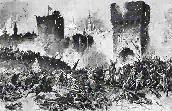
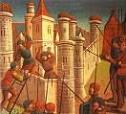

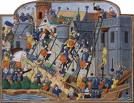

1453 On Jan. 29 a relief force of two ships from Genoa with 700 men arrives in Constantinople, and its capt. Giovanni Giustiniani Longo from Chios is made cmdr. of Constantinople's defenses; on Feb. 26 (night) 700 Italians flee on seven ships, after which the city gates are closed and a giant chain strung across the Golden Horn. I didn't have sex with that woman, though I wanted to? In the spring Charles VII begins advancing toward Bordeaux along three routes with three armies, and the lead army sieges Castillon, causing the earl of Shrewsbury (who received another 3K English troops, for a total of 6K) to try and relieve it, causing French artillery master Jean Bureau (-1463) to go on the defensive, encircling his camp with a ditch and palisade manned by 300 cannon; on July 17 they meet at the Battle of Castillon (first Euro battle where cannons are a major factor in deciding the outcome), and the frisky Brits stumble into thousands of archers and the 300 cannon, decimating them, after which a Breton force under the duke of Brittany charges the English right flank and causes them to flee; Shrewbury's horse is killed by a cannon ball, trapping the dude, and a French archer finishes him off with an axe, causing the English to surrender the last outpost in Aquitaine to the French on Oct. 19, ending the Hundred Years' War (begun May 24, 1337) after 116 years, 1 mo. and 21 days; England loses all possessions in France except for the city of Calais; meanwhile Henry VI has son Edward Plantagenet of Westminster, Duke of Lancaster (1453-71), depriving Richard Plantagenet, duke of York of his hope of succeeding to the throne peacefully, but then Richard gets lucky and Henry goes insane, and Richard becomes protector; meanwhile Henry's wife Margaret actively champions the House of Lancaster and her son against the duke of York and his sons, hopping up the War of the Roses; by now French and English nat. identities have hardened into two different molds? On Apr. 6 after assembling in Jan. on the plains of Adrianople and then reducing every city in their way, 150K Muslims, Janissaries, and Dervishes (incl. some Christians who wanted to get in on the loot) under 21-y.-o. whodya-wanna-call Ottoman Sultan (since 1451) Mehmed (Mehmet) (Mohammed) II (the Conqueror) (1432-81), the Saddam Hussein and Osama bin Laden of the 15th cent. begin the 54-day Final Siege of Constantinople (founded 330 C.E.), defended by 7K Christian knights; the sultan does the traditional Islamic thing of offering the emperor a chance to surrender in exchange for their lives, but he refuses, preferring to fight rather than switch, after which the artillery immediately begins bombarding the city with 70 cannons, incl. a 27-ft.-long 762m (30 in.) 35-ton bronze Shock'em Allah called the Great Turkish Bombard (Dardanalles Gun) (Basilic) (Sahi) (Muhammad's Gun) (designed by Hungarian engineer Urban), which lobs 1.2K-lb. balls up to 1 mi. at the key St. Romanus Gate; on Apr. 12 the 200-ship Ottoman fleet under Bulgarian renegade adm. Suleiman Baltoghlu arrives from Gallipoli, sealing the city off by sea completely; on Apr. 18 (night) the first assault by thousands of mad mullahs is repelled; on Apr. 20 (morning) four large vessels loaded with provisions (four Genoese and one Greek) arrive, and the lame Ottoman fleet fights them all day but fails to stop them from entering the city, pissing-off the sultan, who orders adm. Baltoghlu executed and replaced by Hamza Bey, then has half of his ships pulled on wooden platforms along a greased log roadway he previously constructed by the neutral Genoese colony of Pera across from Constantinople, then launched in the Golden Horn; Muslim assaults on May 7 and May 12 are repelled; by mid-May the Venetian Senate is still debating whether to send aid, and on May 23 a fast ship sent out in early May to greet the expected fleet returns with bad news; on May 22 a lunar eclipse freaks the superstitious Christians, who believe a prophesy that the city can't be taken under a full moon; on May 23 a thunderstorm freaks them more, followed by a strange ghost light surrounding the dome of the Hagia Sophia, which they interpret as the Holy Ghost abandoning it, which doesn't stop hundreds of refugees from crowding in; a captured Muslim engineer is made to talk and give info. allowing the Christians to locate and destroy the Muslim tunnels, buying time; on May 25 the sultan's advisers tell him to raise the siege before the Euros arrive and get them surrounded, but they don't call him the Conqueror for nothing, so he plans an all-out final assault; on May 28 the doomed Christians, sensing the end stage a holy procession, holding the last Christian service in Hagia Sophia, reconciling themselves to dying for their faith; on May 28-29 (Mon.-Tues.) at midnight the final siege begins; although the Christians repel wave after wave, things go bad when their cmdr. Giovanni Giustianini Longo gets wounded, and instead of standing his post orders that he be taken back through the gates to the city, causing the rest of the Genoese to think the gate has been breached, causing them to rush back to it, leaving the emperor and his Greek troops to face the Janissaries alone, after which they are KIA; after the 60-ft.-wide 20-ft.-deep moat and three sets of walls and towers (the inner two walls having 96 towers each) are breached, the city surrenders, after which the Allahu Akbars rape and massacre the helpless don't-say-dhimmi pop., chaining the rest to sell them into slavery (lucky non-white infidel beasts get to do unspeakable things to our white Christian wimmen, incl. gasp, nuns, and after 9/11, we're next?), leaving only 50K after being stopped after 24 hours by Mehmed II, who weeps after viewing the destruction, and utters the immortal soundbyte: "What a city we have given over to plunder and destruction", then awards himself the title of Caesar; Greek-born ecumenical Cardinal Isidore of Kiev (1385-1463) dresses a corpse up in his robes and watches the Turks cut off its head and parade it through the streets, then manages to get shipped to Asia Minor as a slave, later buying his freedom and returning to Rome, adopting the Latin Rite and becoming bishop of Sabina, and later Latin patriarch of Constantinople and archbishop of Cyprus sans jurisdiction, later making the mistake of returning to Moscow and holding a Latin Rite, which gets him imprisoned again; a legion of Cretans manning three towers near the entrance to the Golden Horde holds out and are given safe passage; the Ottoman sailors abandon their ships to rush into the city and get their share, allowing several Christian ships loaded with refugees to escape, incl. Giustianini, who dies a few days later in Chios; after the sultan heads into the city straight to it and personally breaks the altar, Hagia Sophia is turned into a mosque, and the Christian icons plastered over; last Byzantine emperor (since 1448) Constantine XI Palaeologus (Palaiologis) (b. 1405) dies defending the walls, and they stick his head on a pike; on Sept. 30 with infallible timing Pope Nicholas V issues a call for a new Crusade (first time the printing press is used to issue papal appeals?); the loss of Constantinople solidifies Europe around Rome, removing the age-old obstacle to uniting it religiously, while an Islamic prophesy makes the Muslims believe they will conquer Rome next; a major drive to repopulate Istanbul (Turk. "in the city or downtown") (Gr. "eis ten polin" = "into the city") begins, with the 60-alleyway Grand Bazaar (largest enclosed market in the world) built in 1455-61, turning it into the showpiece of the Middle East, with 400K pop. before 1800, about 45% Christian and Jewish; the Muslim Turks are now on the frontier of Germany, and put Venice on the defensive over her eastern colonies for the next 250 years; the Muslims set up a paper mill in Constantinople - how long until a Turk founds Atlantic Records and catapults Ray Charles and the Rolling Stones to stardom? In June after murdering his rivals, king (since 1451) Binnya Khan (b. 1420) is assassinated by his first cousin (son of Binnya Ran I) Leik Munhtaw (-1454), only remaining male descendant of King Razadarit, who becomes Burmese and goes on to murder all remaining male rivals. On Oct. 13 English Lancastrian royal heir Edward of Lancaster, Prince of Wales and Duke of Lancaster (1453-71), only son of Henry VI and Margaret of Anjou is born, throwing a monkey wrench in the plans of Duke Richard of York (father of Richard III and Edward IV) to inherit the throne, fueling the upcoming Wars of the Roses, and making for some great Shakespeare?; since daddy Henry VI is insane while he's in the oven, Richard tries spreading rumors that the kid is the result of an affair with some unnamed lover, but it doesn't go over? On Oct. 28 13-y.-o. Ladislaus Posthumus (1440-57) is finally crowned as king of Bohemia and moves to Prague, but dies in 1457 before governing his realms. Mongolia converts to Buddhism. The Jews are expelled from Breslau. The English Parliament recognizes the breakdown of the system of trial by jury, and sanctions the king's council (star chamber, since it sits in a palace chamber with a starred ceiling) to exercise jurisdiction in criminal cases of violence and riot; unfortunately, great lords brought before it often are treated with kid gloves? Jacques Coeur is sentenced for the poisoning of the king's mistress after an unfair trial. The Bohemian Brethren of Prague, composed of what's left of the Hussites settle on the borders of Silesia and Moravia (until 1722). Nothing is all bad? The fall of Constantinople to the Turks causes a large number of Greek scholars to flee to Italy, where they pump up the Renaissance in classical learning; it also leads to renewed efforts to find new westward routes to India and China across the Atlantic as the Ottomans are in a position to close overland trade routes to the Silk Road; after taking over Constantinople, the Muslims find lots of star and crescent flags, and adopt them as their symbol since Sultan Othman I allegedly had a dream of a crescent moon growing until it filled the world, even though Richard I Lionheart had used the symbol in the late 12th cent. when kicking Muslim butt for Christ. The Byzantine Period of the Greek Language ends, and the Modern Period of the Greek Language begins. The S Balkan region (from the Peloponnesus to the Danube River, incl. Albania, Constantinople, Thessaloniki, Thrace, N Greece and Macedonia, Serbia, and Moesia) begins to be called Rumelia (Rumeli) (Turkish "Land of the Romans") as the Muslim Ottomans conquer it from the Christians, who are all Romans as far as they are concerned; up till now they called it Anatolia Rumelia. The Shroud of Christ is sold by Marguerite de Charny to Duke Louis I of Savoy, who moves it to Chambery, France (until 1578); it was really such a poor fake that it disappears for 50 years until Leonardo da Vinci (1452-1519) can be hired to produce the modern good one, based on his own portrait? Nonfiction: Battista Alberti (1404-72), De Re Aedificatoria (On the Art of Building) (10 vols.) (1443-52); dedicated to Pope Nicholas V in 1452, starting out as a trans. of Vitrivius then going on to establish architecture as an intellectual mathematically-based field; in 1485 it becomes the first printed book of architecture, followed in 1486 by the first printed ed. of Vitruvius. Nicholas of Cusa (1406-64), De Pace Fidei (On the Peace of Faith); written after the fall of Constantinople; describes a meeting in heaven where all faiths, incl. Islam agree that there can be one faith with different rites, although Christianity is the most accurate, and Judaism is excluded. Poetry: Martin Le Franc, Le Champion des Dames (The Defender of Ladies); contains the first known image of a witch flying on a broomstick. Music: Conrad Paumann (1410-73), Fundamentum Organisandi (Fundamentals of Organ Playing); a collection of organ music and dances, becoming the earliest music for 2-hand keyboard to survive to modern times. Births: Spanish gen. ("The Great Captain") ("Father of Trench Wafare") Gonzalo Fernandez de Cordoba, Duke of Terranova and Santangelo (d. 1515) on Sept. 1 in Montilla (near Cordoba). English Lancastrian royal heir Edward of Lancaster, Prince of Wales and Duke of Lancaster (d. 1471) on Oct. 13 in Westminster Palace; only son of Henry VI and Margaret of Anjou. Italian co-ruler (with Lorenzo the Magnificent) of Florence Giuliano de' Medici (d. 1478); 2nd son of Piero de' Medici the Gouty. Portuguese explorer gen. Alfonso (Afonso) de Albuquerque (d. 1515) in Alhandra. Italian Florentine architect Antonio da Sangallo the Elder (d. 1534) in Florence; brother of Giuliano da Sangallo (1443-1516). Deaths: English composer John Dunstable (b. 1390) on Dec. 24. Byzantine emperor (last) (1449-53) Constantine XI Palaeologus (b. 1405) on May 29 in Constantinople, er, Istanbul (KIA).


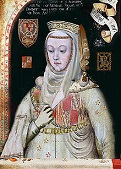
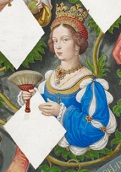
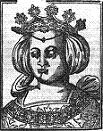
1454 A famine decimates the Mexica (Aztec) people in their year of 1-Rabbit. In Jan. Sultan Mehmed II reinstalls the Greek Orthodox Church in Constantinople with all its privileges, while banning all Roman Catholic orgs. from his empire; in Mar. Gennadius II Scholarius (1400-73), who was taken POW by the Turks last year is made ecumenical patriarch of Constantinople (until 1464) by Mehmed II in order to pacify the remaining Christians, whose blood still stinks Constantinople up, beginning a custom of investing each patriarch with a diploma (berat) spelling out his rights and duties as ethnarch (civil head of Orthodox Christians); he gets pissed-off at the treatment of Christians and tries to resign several times before finally doing it? In Jan. after 7 mo. in power, king (since 1453) Leik Munhtaw (b. ?) is assassinated by his palace ministers, leaving no male heir, causing them to choose his daughter Shin Sawbu (Binnya Thau) (1394-1471), who becomes Burmese Hanthawaddy king #15 (until 1471), ruling from the Shwedagon Pagoda in Dagon. On Feb. 17 duke of Burgundy (1419-67) Philip III the Good (1396-1460) holds the magnificent Feast of the Oath of the Pheasant (Banquet du Voeu du Faisan) in Lille to launch a Crusade against the pesky Turks, after which he leaves on Mar. 24 to visit the Reichstag in Regensburg to discuss plans with HRE Frederick III; on Oct. 15-28 the Diet of Frankfurt is held, chaired by Aeneas Silvius, with 68-y.-o. St. John Capistran (b. 1386) sent by Pope Calixtus III to preach a crusade to aid the Hungarians against the pesky Turks, to start next year; too bad, Pope Nicholas V dies next Mar., throwing a monkey wrench into the plans. On Mar. 10 Casimir IV of Poland marries Elizabeth of Austria (Habsburg) (1436-1505), daughter of HRE Albert II, and one of three surviving grandchildren of HRE Sigismund I (giving her claims to Bohemia and Hungary), who becomes known as the "Mother of the Jagiellons", giving birth to six sons and seven daughters by 1483, incl. four kings, Vladislaus II (1456-1516), John I Albert (1459-1501), Alexander (1461-1506), Sigismund I (1467-1548), a cardinal, Frederick (1468-1503) and five princesses, Jadwiga of Bavaria (1457-1502), Sophia of Brandenburg-Ansbach (1464-1512), Anna of Pomerania (1476-1503), Barbara of Saxony (1478-1534), and Elizabeth of Silesia (1481-1517), further helped by the childlessness of her brother Ladislaus Posthumous. On Mar. 27 after Henry VI of England has an attack of the hereditary madness that plagues the House of Valois, Duke Richard of York is appointed protector of England and regent, with Henry's son Edward named Prince of Wales; Richard makes good use of his new power to imprison the duke of Somerset, but the king recovers from his madness around Christmas and wants to rule again, removing York from his office and restoring Somerset to power; Queen Margaret seeks to be rid of the Yorkists now that she has produced an heir. On Apr. 9 Cosimo de' Medici of Venice and Francesco I Sforza of Milan sign the Peace of Lodi in Lombardy on the banks of the Adda River, ending their long feud and setting permanent boundaries along the Adda River, setting up the principle of a balance of power in N Italy (until 1494), and shutting smaller states like Genoa and the houses of Savoy, Este, and Gonzaga out; on Aug. 30 Milan, Venice, and Florence sign a related agreement in Venice, pledging mutual non-aggression, causing Naples to soon join in. On Apr. 23 survivor Thomas Bourchier (1404-86) becomes archbishop of Canterbury (until 1486), going on to be appointed lord chancellor next Mar., and live through the Wars of the Roses playing both sides, crowning Edward IV, Richard III and Henry VII. On July 20 king (since Dec. 25, 1406) John (Juan) II (b. 1405) dies after a 48-year reign, during which he spent most of his time in amusements while forcing Jews to wear distinctive clothing and keeping them out of the govt., but otherwise letting his kingdom slide, and is succeeded by his equally weak son Henry (Enrique) IV (the Impotent) (the Spendthrift) (1425-74) as Trastamara king of Castile and Leon #5 (until Dec. 11, 1474), who follows daddy's example and lets his kingdom continue its decline and decentralization; his 1st wife (since 1440) Blanca (Blanche) II of Navarre (1424-64), whom he divorced after 13 years of marriage in 1453 after having her examined to prove that she's still a virgin while he gets the hos of Segovia to testify that he's not impotent, and sends home (after which her family imprisons her, and she mysteriously dies in 1464) out of the way, he marries Portuguese infanta Juana (Joanna) of Portugal (1439-75) (son of King Duarte of Portugal and Eleanor of Aragon) next year. Thomas FitzJohn FitzGerald, 7th Earl of Kildare (1421-77), cousin of Thomas FitzGerald, 7th Earl of Desmond is appointed lord justice of Ireland (reappointed in 1461-70), followed in 1455 by deputy lord lt. of Ireland, and in 1463-8 by lord chancellor of Ireland, given the right by Edward IV to use the title and receive the salary for life; in 1462 he becomes justiciar of Ireland, getting an Irish parliament assembled in Drogheda 4x, with the one in 1460 given legislative independence; the cousins become leaders of the home rule party, pissing-off the English in the Pale, who plot to get them executed. Mehmet II begins campaigning in Greece and the Balkans (ends 1459), capturing S Serbia (1454-5); Wallachia becomes part of Turkey. The Prussian Revolt (Thirteen Years War) (ends 1466) sees the Prussian nobles and townfolk revolt against the oppressive German Teutonic Knight rulers with the support of Casimir IV Jagiellon of Poland, who captures the seaport of Elbing. Johann Gutenberg begins producing indulgences bearing printed data - the first holy funny money? The remaining Greeks in Constantinople incl. the patriarch hole up in the Phanar (Fenar) (Fener) (Turk. "lantern") neighborhood midway up the Golden Horn, known for a columnar monument topped with a lantern; the Phanar Greek Orthodox College in Constantinople is founded, becoming the oldest Greek Orthodox school in the city to survive to modern times; in 1881-3 the Red Castle is built at a cost of 17,210 Ottoman gold pounds, becoming the "5th largest castle in Europe" because of its shape. German rabbi Isaac Zarfati writes a letter to his fellow Jews, extolling the virtues of Turkey and holding it out as a Promised Land, with the soundbytes "O Israel, wherefore sleepest thou? Arise, and leave this accursed land forever"; "I proclaim to you that Turkey is a land wherein nothing is lacking, and where, if you will, all shall yet be well with you. The way to the Holy Land lies open to you through Turkey. Is it not better for you to live under Moslems than under Christians? Here every man may dwell at peace under his own vine and fig tree. Here you are allowed to wear the most precious garments. In Christendom, on the contrary, ye dare not even venture to clothe your children in red or in blue, according to your taste, without exposing them to insult of being beaten black and blue, or kicked red and green, and therefore are ye condemned to go about meanly clad in sad-colored rainment."; in 1553 Portuguese Jew Samuel Usque (1500-55) calls Turkey "a broad and spacious sea which God opened with the rod of His mercy as He opened the Red Sea at the time of Exodus... Here the games of liberty are always open for the observance of Judaism"; too bad, after arriving with their Euro educations and riches, but losing heir trading connections with Europe, their descendants progressively poorer and begin to be systematically downgraded to the usual vermin by the hate of Allah and Muhammad, so that by the end of the 19th cent. they are more than eager to leave? Births: Italian navigator and continental name-giver Amerigo Vespucci (d. 1512) on Mar. 9 in Florence. Italian Renaissance scholar Poliziano (Politian) (Angelus/Agnolo Ambrogini) on July 14 in Montepulciano, Tuscany. Italian queen of Cyprus (last) (1474-89) Caterina (Catherine) Cornaro (d. 1510) on Nov. 25 in Venice. Italian astronomer Domenico Maria Novara (d. 1504) in Ferrara; prof. of astronomy at Bologna and teacher of Copernicus. Dutch (Flemish) priest-reformer Jan Standonck (d. 1504) in Mechlin, Austrian Netherlands; educated at the Brothers of the Common Life and Leuven U. and U. of Paris. Italian Renaissance painter Pinturicchio (Pintoricchio) (Bernardino di Betto) (d. 1513) in Perugia; asst. of Perugino. Deaths: Spanish king (1406-54) John II of Castile (b. 1405) on July 20.



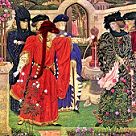

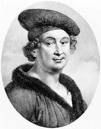



1455 On Jan. 8 Pope Nicholas V provides formal legitimization for Portugal's overseas conquests in the papal bull Romanus Pontifex, written to Afonso V, giving Portugal the primary right over other Christian nations to enslave non-Christian peoples on newly discovered lands in specific regions, creating the Roman Catholic Doctrine of Discovery, with the soundbyte: "We bestow suitable favors and special graces on those Catholic kings and princes... athletes and intrepid champions of the Christian faith... to invade, search out, capture, vanquish, and subdue all Saracens and pagans whatsoever, and other enemies of Christ wheresoever placed, and... to reduce their persons to perpetual slavery, and to apply and appropriate... possessions and goods, and to convert them to... their use and profit"; it also grants exclusive trading rights between Morocco and the Indies to the Portuguese; he later extends it to all territories Portugal takes in the future - the Christian counter-jihad is on? In Feb. Henry VI recovers, and his Henry VI's wife Margaret of Anjou alienates Duke Richard Plantagenet of York, getting his protectorship revoked, beginning the 30-year Wars of the Roses on May 22 (until June 16, 1487) (32 days 3 weeks 4 days) between two rival branches of the House of Plantagenet, the white rose Yorkists (supporters of Richard) and the red rose Lancastrians (supporters of Henry VI and his wife) (the bloody red rose of Lancaster and the white peppermint pattie of York?); according to Shakespeare's Henry VI Pt. 2, it all started when Richard Plantagenet, 3rd duke of York and his enemy Edmund Beaufort, 2nd Duke of Somerset pluck white and red roses in the Temple Garden, then everybody chose sides and plucks theirs accordingly; "Shall send between the red rose and the white/ A thousand souls to death and deadly night" (Act II, Scene IV). On Mar. 24 Pope (since 1447) Nicholas V (b. 1397) dies, and on Apr. 8 Alfonso de Borgia (Boria) is elected Pope (#209) Calixtus (Callistus) III (1378-1458) (first Borgia pope), immediately calling for a new Crusade; too bad, on Mar. 24 Bishop Rudolf von Deipholz of Utrecht also dies, causing Philip III the Good to drop his plans for a Crusade in favor of gaining control of Utrecht, and everybody else to drop out since he is the main man; when he finally secures Utrecht in Oct. 1456, the French dauphin (future Louis XI) asks for asylum, causing him to keep the Crusade on hold despite pleas from the pope. In Mar. the Red Douglases, led by its first chief George Douglas, 4th Earl of Angus (1429-62) join the army of James II against the Black Douglases, led by James, 9th earl of Douglas, and siege his main base at Abercorn Castle in West Lothian; after James Hamilton, 1st Lord Hamilton (1415-79), at the urging of his uncle James Livington, 1st Lord Livingston (-1467) defects and joins James II's side, earl Douglas rushes to England to drum up support, after which Abercorn Castle is razed; on May 1 the rest of the Black Douglases, incl. Earl Douglas' three brothers are defeated at the Battle of Arkinholm near Langholm; on May 18 James Douglas' twin brother Archibald Douglas, Earl of Moray (b. 1426), is killed; his other brother Hugh Douglas, Earl of Ormonde is captured and executed; the last brother John Douglas, Lord of Balvenie (1433-1463) escapes to England; in June Threave Castle on an island in the River Dee in Galloway, their last fortress is bombarded into submission, and the Scottish parliament forfeits all their property, causing the pesky Black Douglases to become kaput, centralizing the Scottish monarchy; not trusting the king too far, the Act of Annexation requires the Douglas lands to be used to generate income and not squandered in patronage; James II then decides it's time to replenish the higher nobility and creates the earldoms of Argyll, Erroll (1453), Marischal, Morton, and Rothes, plus a number of propertyless titles of "lords of parliament"; he then takes advantage of the War of the Roses in England to raid Berwick. On May 22 Richard Plantagenet, 3rd duke of York, backed by the earl of Warwick and his father defeat the queen's forces led by Edmund Beaufort, 2nd Duke of Somerset at the First Battle of St. Albans, and Somerset is killed by York's 3rd son Richard (later Richard III), causing the king and queen to flee to London; Duke Richard follows them there and sits on the throne in the house of Parliament, causing the king to confront him, but then backs down with a compromise whereby he will retain his crown for life, but upon his death York's four sons will inherit the crown instead of his own son Edward Lancaster, prince of Wales; the king then goes insane again and Duke Richard becomes protector again on Nov. 19 - get in the back door, I think we can make this work? On July 8 the Prinzenraub (Stealing of the Princes) sees little brother princes Elector Ernst of Saxony (1441-86) and Duke Albert III (the Bold) of Saxony (1443-1500) kidnapped by Kunz von Kauffungen (Kaufungen) from the Altenburger Schloss, but they escape after manly knight Ahnuld, er, Albert shows his stuff. Jacques Coeur escapes to Rome, and dies the next year while leading a papal fleet against the Ottomans. Margaret Beaufort, countess of Richmond and Derby (daughter of John Beaufort, 1st duke of Somerset) marries Edmund Tudor, Earl of Richmond (1431-56) (son of Owen Tudor); in 1457 the have a son Henry Tudor, who becomes English King Henry VII in 1485. Charles VII, the king she had crowned and who had summarily abandoned her finally reopens the 24-y.-o. (1431) case of Joan of Arc, and appoints three bishops to rehear the case, allowing her family to introduce new evidence, and the original verdict is annulled, condemning the "atrocious miscarriage of justice"; the papal appellate court condemns her original trial and shreds a copy of the trial document; she is canonized in 1920, becoming the first (only) person in history to be condemned as a heretic and later sainted. Tanjong dies, and Sejong the Great's 2nd son grand prince Suyang becomes Sejo (1417-68), Yi king #7 of Korea ( until1468). French Sorbonne student Francois Villon (1431-63) kills a priest in a street brawl and is sentenced to banishment, but gets the sentence rescinded on the grounds of self-defense, then helps steal 500 crowns from the chapel of the College de Navarre in Paris, flees to Angers in W France, is tried in absentia, and banished again, wandering through France until 1461. The uninhabited Cape Verde Islands 400 mi. W of Cape Vert, Senegal are discovered by Alvise Cadamosto (Alvide da Ca'da Mosto) (1432-83), a Venetian in the service of Portuguese Prince Henry, who goes on to explore most of Cape Vert (home of modern-day Dakar), the Senegal and Gambia Rivers (until 1457) - if only they had kept going west? Architecture: Palazzo Venezia in Rome's Piazzo Venezia is built for Cardinal Pietro Barbo, and later is made famous as Mussolini's favorite place from which to address huge crowds. The Old Palace (Eski Saray) is begun in Constantople as the imperial official residence (until 1465). Inventions: Cast-iron pipe is invented in the Castle of Dillenburgh in Germany - should be dildoburgh? Art: Andrea Mantegna (1431-1506), St. James and St. Christopher (Eremitani Chapel, Padua); destroyed by a bomb in WWII. Rogier van der Weyden (1399-1464), Portrait of Francesco d'Este. Births: German humanist Hebrew scholar Johann Reuchlin (AKA Capnion) (d. 1522) on Jan. 29 in Pforzheim (Black Forest); uncle of Protestant Reformation leader Melanchthon (1497-1560). Danish (1481-1513), Norwegian (1483-1513), and Swedish (1497-1501) king Hans (Johannes) (John) (d. 1513) on Feb. 2; son of Christian I (1426-81) and Dorothea of Brandenburg (1430-95). Portuguese king #13 (1481-95) Joao (John) II (the Perfect Prince) (d. 1495) on Mar. 3 in Lisbon; son of Alfonso V (1432-81). German Hohenzollern prince-elector #4 of Brandenbug (1486-99) John II Cicero (d. 1499) on Aug. 2 in Ansbach; eldest son of Albert III Achilles (1414-86) and Margaret of Baden; father of Joachim I Nestor (1484-1535). Bavarian duke (last duke of Landshut) George "the Rich" (d. 1503) on Aug. 15 in Wittelsbach; son of Louis IX the Rich (1417-79) and Amalia of Saxony. English Lancastrian traitor Henry Stafford, 2nd Duke of Buckingham (d. 1483) on Sept. 4; son of Humphrey Stafford, 1st duke of Buckingham (1402-60); father of Edward Stafford, 3rd Duke of Buckingham (1478-1521). English patriarch John Spencer (d. 1522); knighted in 1519; father of Sir William Spencer (1496-1532); grandfather of Sir John Spencer (1524-86). Italian wood engraver (inventor of the chiaroscuro woodcut) Ugo da Carpi (d. 1523) (d. 1532?). French humanist theologian (Roman Catholic) Jacques Lefevre d'Etaples (Jacques Lefčvre d'Étaples) (d. 1536) in Etaples, Picardy; educated at the U. of Paris; teacher of William Farel (1489-1565). Deaths: Dutch printer Laurens Janszoon Koster (b. 1370). Italian sculptor Lorenzo Ghiberti (b. 1378). Italian painter Fra Angelico (b. 1387). Spanish bishop Alonso Tostado (b. 1400) in Avila; leaves commentaries on the Bible that influence Don Isaac Abravanel (1437-1508); his complete works in 13 vols. are pub. in Venice in 1507 and 1547, and a more complete ed. in 24 vols. is pub in 1615, and a yet more complete ed. in 27 vols. in 1728; his sepulchre in Avila Cathedral is carved by Vasco de la Zarza (-1524) in 1518.


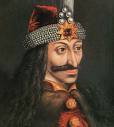




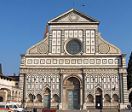
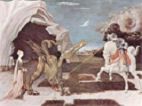
1456 On Feb. 25 Henry VI recovers again, and again dismisses Duke Richard of York as Protector, and his better half the queen rules things again; York's 3rd son Richard, not content to wait for Henry VI's death, plots with his father to break his vow and seize the throne, but the queen is onto it and raises an army. On Apr. 8 in a bid to get Crusader protection, Hungarian king Matthias Corvinus deposes Serbian despot (since 1427) George (Durad) Brankovic (b. 1377) (whose income from the gold-silver mines in Novo Brdo makes him the richest monarch in Europe) in favor of Stephen (Stjepan) Tomasevic (-1463), Roman Catholic son of Bosnian king Stephen (Stjepan) Tomas Kotromanic; too bad, it backfires when many Serbs join the Turks rather than kiss the pope's butt, and Serbia begins to disintegrate; on Dec. 24 (Xmas Eve) Brankovic is killed in a quarrel with Belgrade gov. Szilagyi, and is succeeded as despot of Serbia by his 3rd son Lazar II Brankovic (1421-58) (until Feb. 20, 1458), who next year Lazar gives an oath of subservience to Mehmed II in order to prevent an invasion. On July 4 the Siege of Belgrade by the Ottomans under Mehmed II begins as the first step toward taking the kingdom of Hungary; on July 22 the Christians, led by Italian Franciscan soldier-priest "athlete of Christ" (St.) John of Capistrano (b. 1386) and Hungarian gen. John (Janos) Hunyadi (b. 1387) relieve the seige in a surprise counterattack, defeating the Turkish fleet then invading the Turkish camp and wounding Mehmed II, causing the Ottomans to retreat, staving off Ottoman conquest of Hungary for 70 years, and becoming known as the battle that decided the fate of Christendom; on Aug. 11 big hero John Hunyadi (b. 1387) dies of plague, followed by Capistrano (b. 1386) on Oct. 23, who campaigned successfully along with Nicholas of Cusa for full observance of the decree of the 1215 Fourth Lateran Council requiring Jews and Muslims to wear special markings (usually yellow circles) on their clothing, based on what Muslim lands did to them. The Drakulya did many curious and terrible things year? On Aug. 22 Vlad III Dracula (1431-76), who had fought with Hunyadi recaptures the throne of Wallachia with the help of his old enemies the Saxons, and kills Vladislav II, and in Sept. he takes an oath to Hungarian king Matthias Corvinus (son of Janos Hunyadi) and another to Turkish sultan Mehmed II, going on to strengthen the country while practicing his too-cruel-to-be-kind tough love form of absolute-honesty-required justice, with capital at Targoviste ("marketplace") on the right bank of the Ialomita River, having convicts roasted alive and/or flayed, and infants impaled on their mothers' breasts; meanwhile Mehmed II continues the conquest of Serbia, extending the Ottoman empire to the Danube by 1459. On Oct. 11 William Waynflete (1398-1486), bishop of Winchester (since 1447) becomes lord chancellor of England (until 1460), going on to try and condemn his deacon Reginald Pecock (1395-1460) next year for heresy for preaching the use of reason instead of authority, and burn his books not him - typical example of why W Europe is the good part and E Europe the butthole? In Oct. Count Ulrich II of Cilli (b. 1406) is appointed lt. of Hungary by young king Ladislas V Posthumous at the Diet of Futtak, and is then assassinated in Belgrade on Nov. 9 by John Hunyadi's eldest son Laszlo Hunyadi (1433-57) in revenge for a previous assassination attempt on his daddy, causing the Cilli (Celje) line to become bloomin'-onion kaput; Ladislaus V has Laszlo beheaded next Mar. 16, which pisses off the Hungarian pop. and causes him to flee to Prague again. On Dec. 4 Charles I (b. 1401) dies, and his son John II (1426-88) becomes duke of Bourbon and Auvergne (until 1488), getting appointed constable of France in 1483. Casimir IV of Poland goes to war against the Teutonic Knights in Prussia. Rodrigo Borgia becomes a cardinal at the age of 25. The dauphin Louis is exiled again to the court of Philip III the Good of Burgundy (ends 1461). Scotland raids the Isle of Man. The Crusader seaport of Brindisi in S Italy is destroyed by an earthquake. Architecture: Duka Francesco I Sforza of Milan founds Ospedale Maggiore (Big Hospital) (Ca' Granda), AKA Ca' Granda (Big House), the largest community hospital of the 15th cent. AKA the Policlinico of Milan. Leon Battista Alberti begins the facade of Santa Maria Novella, the first great basilica in Florence (finished 1470); his masterpiece? Art: Paolo Uccello (1397-1475), St. George and the Dragon; looks more like a whimpy wyvern? Poetry: Francois Villon (1431-63), Le Petit Testament (The Legacy); 40 stanzas. Births: Bohemian king (1471-1516) and Hungarian-Croatian king (1490-1516) Vladislaus (Ladislav) (Ladislas) (Uadislas) (Ulaszlo) II Jagiello (d. 1516) on Mar. 1 in Cracow; son of Casimir IV of Poland-Lithuania and Elizabeth of Bohemia, daughter of Albert II of Germany; maternal nephew of Ladislaus Posthumous of Hungary. English queen (1483-5) Anne Neville (d. 1485) on June 11 in Warwick Castle; daughter of Richard Neville, 6th earl of Salisbury and 15th earl of Warwick (1427-81); wife (1470-1) of Edward of Lancaster, prince of Wales (1453-71). Scottish queen Margaret of Denmark (d. 1486) on June 23 in Denmark; daughter of Christian I (1426-81) and Dorothea of Brandenburg (1430-95); wife (1469-) of James III (1451-88); mother of James IV (1473-1513). Irish lord deputy of Ireland (1477-94, 1496-1513) Gerald FitzGerald, 8th Earl of Kildare (d. 1513) (AKA Garret the Great Earl) in Maynooth, County Kildare; son of Thomas FitzGerald, 7th Earl of Kildare, and Jane FitzGerald, daughter of "Usurper" James FitzGerald, 6th Earl of Desmond; father of Young Gerald FitzGerald, 9th Earl of Kildare (1487-1534), father of Thomas FitzGerald, 10th Earl of Kildare (1513-37). Deaths: Italian patriarch #1 of Venice (1451-6) St. Lawrence Giustiniani (b. 1381) on Jan. 8 in Venice; canonized on Oct. 16, 1690 by Pope Alexander VIII. Italian Franciscan St. John of Capistrano (b. 1386) on Oct. 23 in Ilok, Croatia. Hungarian Christian leader Janos Hunyadi (b. 1387) on Aug. 11 in Belgrade (plague). French merchant Jacques Coeur (b. 1395) on Nov. 25 in Chios, Greece. French duke of Bourbon (1434-56) Charles I (b. 1401) on Dec. 4 in Chateau de Moulins. Hungarian nobleman Ulrich II of Celje (b. 1406) on Nov. 9 (assassinated). Spanish poet Juan de Mena (b. 1411) in Torrelaguna. English noble Edmund Tudor, earl of Richmond (b. 1431) on Nov. 1; dies with Henry VII in his wife's womb.
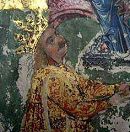





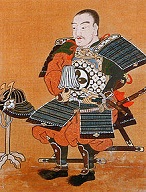

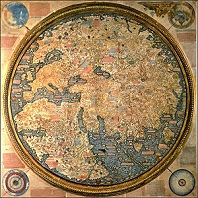
1457 On Mar. 14 Ming Tai Tsung (Zhu Qiyu) (b. 1428) dies, and his elder brother Ming Ying Zong recovers the Chinese throne (until 1464), soon having pesky minister Yu Qian executed, turning him into a folk hero. In Mar. a Great Pacification is held in St. Paul's Cathedral in London - what war of the roses? On Apr. 12 after receiving 6K horsemen from Vlad III Dracula, Bogdan II's son Stephen defeats Petru Aron at the Battle of Doljesti, followed on Apr. 14 by the Battle of Orbic, after which Petru flees to Poland, while Stephen is crowned prince Stephen III the Great (1433-1504) of Moldavia, going on to win 34 of 36 battles against the Ottomans while maintaining Moldavia's independence from Hungary and Poland. On Nov. 23 Ladislaus V Posthumous (b. 1440) dies childless suddenly in Prague of leukemia while preparing to wed French king Charles VII's son Magdalena, although the pop. believes he is poisoned; happy HRE Frederick III inherits Upper and Lower Austria (N and S of the Enns River), giving his Hapsburg brother Albert VI the Prodigal (1418-63) Upper Austria (above the Enns River) (capital Linz) (the smaller part) next year, which pisses him off, causing him to siege Frederick in the Vienna Hofburg then take over Lower Austria (below the Enns River) in 1462; meanwhile Frederick III tries to secure the kingships of Bohemia and Hungary. Pope Callistus III summons an assembly of the princes of Europe to devise measures against the inroads of Islam. After letting his troops pillage Scania, Karl VIII of Sweden is driven out by a Church-backed peasant revolt, and flees to Gdansk, and on July 3 Christian I of Denmark and Norway is crowned king of Sweden in Uppsala, even though the real power remains in the hands of the Stures family (Sten, Svante and Sten the Younger); meanwhile Duke Adolf of Schleswig-Holstein (b. 1401) dies, and the gentry elect Christian I as his successor, although they charge him for it, causing him to have to raise taxes; meanwhile Christian continues the bad habit of letting the German Hansa towns use him for a doormat? The Teutonic Knight fortress of Malbork Castle is seized, becoming the residence of the Polish kings. William O'Kelly finishes recapturing all the territory that had been taken during the Norman invasions; part of a gen. trend among Gaelic lords. The Moravian Church (Church of the Brethren) (Unity of the Brethren) (Herrnhuters), claiming to descend from the ancient Unitas Fratrum (Bohemian Brethren) (Herrnhuters) is founded in Bohemia by Peter Chelcicky (Chelchich) (-1460), spurred by the writings of John Wycliffe (1324-84) and Jan Hus (1373-1415); members lay aside class distinctions and abstain from oaths and military service. Sports: Golf is banned in Scotland by King Jacob II and the Scottish Parliament because it interferes with archery, a vital sport for defense, not to mention sword practice; "futeball" is also banned. Architecture: The Renaissance Facade of the Oratoro di San Bernardino in Perugia, Italy is begun (finished 1461). Edo (Chiyoda) Castle is built by samurai warrior-poet Ota Dokan Sukenaga (1432-86) in the Edo clan town of Edo in SE Honshu Island, Japan; in 1603 Shogun Tokugawa Ieyasu makes it his HQ; in the 18th cent. the pop. tops 1M; in 1868 Emperor Meiji moves his capital there from Kyoto, renaming it Tokyo ("eastern capital"), renaming Edo Castle to Tokei Castle then Tokyo Castle, then Palace Castle, which is destroyed on the night of May 24/25, 1945 by an Allied firebombing raid, after which in 1948 the new Tokyo Imperial Palace is built. Inventions: Tight-fusted Mainz moneylender Johann Fust (1400-66), who repossessed the press and types of Johann Gutenberg becomes the first to print in colors using red, blue, and black inks, printing the first dated book, a great psalter. Science: Portuguese king Afonso V commissions Italian cartographer Fra Mauro (-1464) (a Camaldolese monk from Murano Island near Venice) to make the 2mx2m Fra Mauro World Map of Africa, Asia, and Europe, which is finished on Apr. 24, 1459, and sent to his uncle Prince Henry the Navigator along with a letter encouraging funding of new explorations, becoming the best map to date by the Euro world, ending Bible-based geography and launching scientific geography; claims that the Earth is spherical with a diam. of 22.5K-24K mi. (34.5-43.1km) (true value 24,860 mi. = 40,008km; the first mention of Java in a Euro map; show the Cape of Diab as the southernmost point of Africa; no mention of America, only Greenland (Grolanda). Nonfiction: Georg Puerbach (1423-61), Pro Pluribus Annis (Vienna); the first printed almanac. Births: English Tudor king #1 (1485-1509) Henry VII Tudor (d. 1509) on Jan. 28 in Pembroke Castle, Wales; only son of Edmund Tudor, 1st earl of Richmond (1431-56) and Margaret Beaufort (1443-1509), great-granddaughter of John of Gaunt and 3rd wife Catherine Swynford; head of the house of Lancaster 1471-; husband (1486-1503) of Elizabeth of York (1466-1503); father of Arthur Tudor (1486-1502), Margaret Tudor (1489-1541), Henry Tudor (Henry VIII) (1491-1547), and Mary Tudor (1495-1533). Italian "Decades", "De Orbe Novo" historian (of Spain) Peter Martyr d'Anghiera (d. 1526) on Feb. 2 in Arona (near Anghiera). French heiress (of the cent.?) Mary of Burgundy (d. 1482); daughter of Charles the Bold. Italian Florentine painter Filippino Lippi (d. 1504); son of painter Fra Filippo Lippi (1406-69). German "Ship of Fools" humanist satirist Sebastian Brant (Brandt) (d. 1521) in Strasbourg; studies at the U. of Basel, then becomes town clerk in Strasbourg in 1501 after pub. his big bestseller in 1494. Deaths: Italian humanist scholar Lorenzo Valla (b. 1407) on Aug. 1 in Rome. Italian non-PC painter Andrea del Castagno (b. 1423). Hungarian soldier-statesman Laszlo Hunyadi (b. 1433) on Mar. 16 (beheaded). Hungarian-Bohemian king Ladislaus IV Posthumus (b. 1440) on Nov. 23 in Prague (leukemia).



 ii
ii



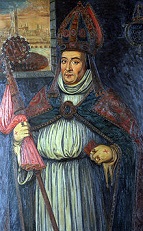


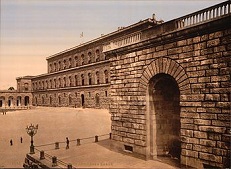
1458 On Jan. 1 Frederick II the Gentle of Saxony founds an annual trade fair in Leipzig with an imperial privilege; in 1507 HRE Maximilian II makes them into imperial fairs (Reichsmussen), banning any other fairs within a 15-mi. radius, making nearby towns depending on Leipzig; in 1523 the Welser family of Augsburg build shops there, followed by the Fugger (pr. FOO-guh) family, and by the 18th cent. Leipzig becomes "the marketplace of Europe", a center for trade from England to Poland. On Jan. 23 after HRE Frederick III is unable to secure the kingships of Hungary and Bohemia, John Hunyadi's son Matthias Corvinus (1443-90) is elected king of Hungary and Croatia (until Apr. 6, 1490); on Mar. 2 Ultraquist (moderate Hussite) leader George of Podebrad (Podiebrad) (Podebrady) (1420-71) is crowned king of Bohemia (until Mar. 22, 1471) in Prague, trying to pursue a middle course of conciliation with the Roman Catholic Church (which considers him a heretic?), going on to persecute the puritanical anti-papist quasi-democratic Bohemian Brotherhood. On Feb. 20 Lazar II Brankovic (b. 1421) dies, and is succeeded as despot of Serbia (Rascia) by his blind older brother Stefan III Brankovic (1417-76), giving Stephen Tomasevic of Bosnia the idea of invading, capturing Srebrenica and other Serbian towns. On June 27 Alfonso V the Magnanimous of Aragon (Alfonso I of Naples) (b. 1396) is KIA in battle against Genoa, and his brother John (Juan) II the Great (Faithless) (1398-1479) becomes king of Aragon (until Jan. 20, 1479), while his illegitimate son Ferdinand I Ferrante (1423-94) becomes king of Sicily and Naples (until 1494) after his legitimate son Prince Charles of Viana declines the titles, tries to marry a Castilian princes, and is thrown in prison by his daddy; Pope Calixtus III refuses to recognize Ferdinand III on account of his illegitimacy. On July 28 king (since 1432) John II (b 1418) dies, and his eldest daughter Charlotte de Lusignan (1444-87) becomes queen of Cyprus (until 1463), but her illegitimate half-brother (by Marietta de Patras) James II the Bastard de Lusignan (1438-73) (archbishop of Nicosia since 1455) vies for the throne, blockading her and her hubby in their castle in Kyrena from 1460-3. On Aug. 6 Pope (since 1455) Calixtus III (b. 1378) dies, and on Aug. 19 Enea (Aeneas) Silvio (Silvo) (Silvius) (Sylvius) de' Piccolomini is elected Pope (#210) Pius II (1405-64), becoming the first pope to write an autobio.; before taking holy orders in 1446 he had been a well-known author of erotic lit., incl. the erotic novel Euryalus and Lucretia, or The Story of Two Lovers in the style of Boccaccio (1313-75), and had fathered a dozen illegitimate children before becoming pope; an advocate of a Crusade against the Turks since 1453, he has trouble pushing it off on Louis XI of France and others until 1464, when he croaks at the wrong moment; in ? he pub. De Europa, in which he claims that geese come from wooden structures underneath the sea; during the conclave Aeneas Sylvius tells Cardinal Giovanni Castiglione "What is our Italy without the bishop of Rome? We have lost the empire, but we still have the apostolic see." In Aug. Florentine gonfalonier (head magistrate) Luca Pitti (1398-1472) stages a coup in the name of old fart Cosimo de' Medici, ruling in his name until his 1464 death and getting wealthy, commissioning Filippo Brunelleschi's pupil Luca Fancelli (1430-1502) to design the Roman aqueduct-style Pitti Palace (Palazzo Pitti), ordering the windows to be made as big as the doors of his rival's Medici Palace on the Via Larga, with an internal courtyard big enough to contain the whole palace; it is still unfinished at Pitti's death in 1472, and in 1549 it is sold by his descendant Buonaccorso Pitti to Eleonor of Toledo (Leonor Alvarez de Toledo y Osorio) (1522-62), wife of Cosimo I de'Medici, who has it doubled in size and adds the Vasari Corridor above the Ponte Vecchio through the Uffizi Gallery to the Palazzo Vecchio, which remains their official residence, after which Eleonora's son Francesco I and his wife Johanna of Austria make it their principal residence and home of the Medici art collection; the Boboli Gardens at the rear are landscaped by Niccolo Tribolo and Bartolommeo Ammanati, featuring an amphitheatre where Terence's "Andria" debuts in 1476; it remains the principal Medici residence until the death of the last male Medici heir in 1737. On Dec. 26 duke (since Sept. 22, 1457) Arthur III (b. 1393) dies, and his nephew (son of Count Richard of Etampes) Francis II (1433-88) becomes duke of Brittany (until Sept. 9, 1488). After the two Byzantine rulers of the Morea (Peloponnese) begin fighting and fail to pay their tributes to Sultan Mehmed II, the Ottomans intervene, invade Athens, and sack the Sackropolis, er, Acropolis, then annex the whole peninsula by 1460; a mosque is built on the Acropolis, and the Erechtheum on the Acropolis is turned into a harem (until 1833) - erect, yes? Prince Henry the Navigator of Portugal crusades in Morocco. The Black Sheep (Qara-Qoyunlu) Turks take advantage of a Timurid succession struggle to briefly occupy the Timurid capital of Herat, overextending themselves. Mahmud Begarha (Two Forts) (-1511) becomes sultan of Gujarat (until 1511), bring it to its height of wealth and powah. Magdalen College (pr. MOD-lin) in Oxford, England is founded by Winchester bishop (1447-86) William Waynflete (Patten) (1398-1486); it is called Magdalen Hall until 1458; its boys' choir becomes a keeper, as does its deer park next to the Cherwell River. Nonfiction: Alphonso de Spina (-1491), Fortalitium Fidei; a treatise by a Spanish Franciscan converted Jew against enemies of the Church, first used in 1461 by the Inquisition against Jews, becoming part of their manual. Births: Italian poet Jacopo Sannazaro (d. 1530) on July 28 in Naples. Polish-Lithuanian prince (St.) Casimir Jagiellon (d. 1484) on Oct. 3 in Wawel Palace, Krakow; 2nd son of Casimir IV (1427-92) and Elisabeth of Austria (-1505); grandson of Albert II of Germany (1397-1439); feast day: Mar. 4. Deaths: Spanish poet-historian Perez de Guzman (b. 1376). Spanish poet Marques de Santillana (b. 1389). Spanish king Alfonso V the Magnanimous of Aragon (Alfonso I of Naples) (b. 1396) on June 27. Spanish poet Inigo Lopez de Mendoza (b. 1398) on Mar. 25. Cyprus king (1432-58) John II (b. 1418) on July 28 in Nicosia.

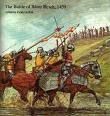

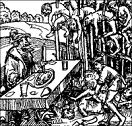
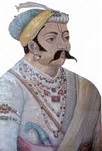

1459 On Mar. 25 (Easter) 28-y.-o. Vlad III Dracula gets even for their killing of his father and brother Mircea by inviting the boyars involved along with their families to an Easter feast, then arresting them, impaling the aged on stakes, and forcing the rest to march 50 mi. to Poenari without rest and build him a fortress high in the mountains over the Arges River that becomes known as Castle Dracula (Poienari Fortress); on Aug. 24 (St. Bartholomew's Day) Dracula impales 30K merchants and officials (mostly Saxons, who are parasites, right?) in Brasov, Transylvania for defying his authority, feasting among the forest of stakes while an executioner (his chef?) dissects some fresh bodies, earning him the name Vlad the Impaler - that's why I don't eat shrimp? On Apr. 1 Stephen Tomasevic marries Lazar II's Byzantine princess widow Helena Palaiologina (1428-58) in Smederevo (on the right bank of the Danube River 25 mi. downstream from Belgrade), deposing blind Stefan Brankovic; too bad, on June 20 the Ottomans capture Smederevo and annex Serbia except for Belgrade (which is captured by Suleiman I the Magnificent in 1521), causing them to flee to Bosnia, where, under papal pressure to get Western aid against the Turks, Tomasevic orders the Bosnian clergy to accept Roman Catholicism or leave, causing the majority to convert and the rest to accept asylum from Herceg Stefan of Hercegovina; the Ottomans establish the Pashaluk of Belgrade (Sanjak of Smederevo) in C Serbia, with admin. center at Smederevo. On June 1 a gen. conference in Mantua to plan a new Crusade called by Pope Pius II is a bust at first as nobody turns up, until reps. from Burgundy finally arrive in Sept.; after they declare war against the Turks next Jan., Mehmed II responds with a threat to capture Rome and behead Philip III the Good of Burgundy. On Sept. 23 after mad king Henvy VI finally alienates the Nevilles, and James Tuchet, 5th Baron Audley, 2nd Baron Tuchet (b. 1398) is sent to arrest Duke Richard of York's chancellor (since 1454) Richard Neville, 5th Earl of Salisbury and 15th Earl of Warwick (1400-60), the Battle of Blore Heath in Staffordshire is a blorey V for the White Rose Yorkists; Tuchet is KIA; too bad, on Oct. 11 after an army led by Henry IV is advancing toward him, the Battle of Ludford Bridge (Ludlow) sees Sir Andrew Trollope (-1461) defect at the last minute from Richard's side with 600 troops overnight, compelling him to flee to France with his sons and supporters (until 1460); in Nov. the Coventry Parliament attaints them, along with all Yorkists; under threat of arrest in England, Edward III's great-grandson Richard Plantagenet, 3rd Duke of York (1411-60) flees to Ireland, and persuades the Irish parliament to pass a declaration of independence stating that Ireland is "corporate of itself" and that "henceforth no person or persons being in the said land of Ireland shall be, by any command given or made under any other seal than the said seal of the said land, compelled to answer to any appeal or any other matter out of the said land"; later Irish lord deputy (1477-94, 1496-1513) Gerald FitzGerald, 8th Earl of Kildare (1456-1513) (AKA Garret the Great Earl) refuses Edward IV's order to annul it, and it is not done until 1495 - you wanted to play god, game over, my friend? HRE Frederick III is elected ruler of Hungary. Stephen III of Moldava invades Poland to search for his bad uncle Petru Aron, but the Poles stop him, and he signs a treaty where he recognizes Casimir IV Jagiellon as his suzerain, in return for which Petru is barred from entering Moldavia. The Ottomans finish conquering Greece - Alexander the Great rolls over in his grave? The Wa Ci sue Ming Ying for peace. The city of Jodhpur in Mandore in modern-day Rajasthan, India (modern-day pop. 1.0M/1.4M) is founded by Rao Jodha (1416-89). Architecture: The Dakhil Darwaza (Gateway) in Gaur (Gour) (Gauda) (Lakhnauti), India, capital of Bengal is begun (finished 1474). Nonfiction: Jalal ad-Din al-Mahalli, Tasfir al-Jalalayn (Arab. "Tasfir of the Twin Jalals"); popular 1-vol. exegesis of the Quran; completed by his student Jalaluddin Al-Suyuti (1445-1505) in 1505. Art: Giovanni Bellini (1428-1516), Agony in the Garden; his brother-in-law Andrea Mantegna paints Agony in the Garden. Andrea Mantegna (1431-1506), Cardinal Ludovico Mezzarota. Births: Austrian organist-composer Paul Hofhaimer (d. 1537) on Jan. 25 in Radstadt (near Salzburg). German humanist scholar-poet ("Erzhumanist") Conradus Celtis (Conrad Celtes) (d. 1508) on Feb. 1. in Wipfeld (near Schweinfurt), Lower Franconia; first to teach the history of the world as a whole. Austrian Hapsburg king (1486-1519) and HRE (1508-19) ("the Last Knight") Maximilian I "Kaiser Max" of Austria (Hapsburg) (d. 1519) on Mar. 22 in Wiener Neustadt; son of HRE Frederick III and Eleanor of Portugal; husband (1477-) of Mary of Burgundy, daughter of Charles the Bold of Burgundy; the real founder of the Hapsburg Empire, who not only marries into the Netherlands and parts of France, but marries his son Philip into Spain, and his grandson Ferdinand into Bohemia and Hungary, leading to the saying: "Let others wage wars, but you, happy Austria, shall marry". German navigator-geographer (for Portugal) Martin Behaim (d. 1507) on Oct. 6 in Nuremberg (Bohemia?). Ottoman pretender sultan Cem (Jem) (Zizim) (d. 1495) on Dec. 22 in Edirne; Serbian mother; 3rd son of Mehmed II; younger half-brother of Bayezid II; half-uncle of Selim I. Polish king (1492-1501) Jan I Olbracht (d. 1501) on Dec. 27. English viceroy to Ireland (1494-) Sir Edward Poynings (d. 1521). German ("the Original Meet the Fuggers") financier Jakob Fugger (d. 1525) of Augsburg; head of the Fugger financial empire in Germany, which is instrumental in promoting Martin Luther. Italian painter Lorenzo di Credi (d. 1537) in Florence. Deaths: Italian Humanist historian Giovanni Francesco Poggio Bracciolini (b. 1380) on Oct. 10 in Florence; leaves History of Florence from 1350-1455 (10 vols.) (in the style of Livy). Danish-Swedish-Norwegian king Erik of Pomerania (b. 1382) on May 3. Turkish scholar Khidr Bey (b. 1407) in Connstantinople.